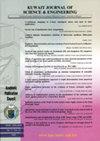Molecular docking and molecular dynamic study of multiple medicinal plants’ bioactive compounds as human papillomavirus type 16 E5 protein inhibitor
引用次数: 0
Abstract
Cervical cancer is the second most prevalent form of cancer in Indonesia. HPV16 and HPV 18 are the leading causes of cervical cancer, accounting for 70-90% of cases. The E5 protein may play a critical role in the disease’s development. Although the high-risk (HR) version of this protein may have some benefits in evading the immune system through MHC I and influencing the cell cycle via p21/p27, very few studies have been performed owing to its tiny size and high hydrophobicity. The purpose of this research is to predict the anti-viral activity of asarinin and thiazolo[3,2-a]benzimidazole-3(2H)-one,2-(2-fluorobenzylideno)-7,8-dimethyl (thiazolo) using molecular docking and molecular dynamics. The docking results showed that the two candidate drugs had a lower docking affinity than rimantadine but comparable stability. Both potent compounds are predicted to disrupt MHC I localization in the ER, the ability of infected cells to proliferate, and the virion assembly process. In contrast, rimantadine is predicted to disrupt infected cells’ proliferation ability via the epidermal growth factor receptor (EGFR) regulation and inhibit the activation process of mitogenic signalling in keratinocytes.多种药用植物生物活性化合物作为人乳头瘤病毒16型E5蛋白抑制剂的分子对接及分子动力学研究
宫颈癌是印度尼西亚第二常见的癌症。HPV16和hpv18是宫颈癌的主要原因,占病例的70-90%。E5蛋白可能在疾病的发展中起着关键作用。尽管该蛋白的高风险(HR)版本在通过MHC I逃避免疫系统和通过p21/p27影响细胞周期方面可能有一些好处,但由于其微小的尺寸和高疏水性,很少进行研究。本研究的目的是利用分子对接和分子动力学方法预测asarinin和噻唑[3,2-a]苯并咪唑-3(2H)- 1,2 -(2-氟苄基)-7,8-二甲基(噻唑)的抗病毒活性。对接结果表明,两种候选药物的对接亲和力低于金刚乙胺,但稳定性相当。预计这两种有效的化合物都会破坏内质网中MHC I的定位,感染细胞的增殖能力和病毒粒子的组装过程。相反,金刚乙胺预计会通过表皮生长因子受体(EGFR)调节破坏感染细胞的增殖能力,并抑制角质形成细胞中有丝分裂信号的激活过程。
本文章由计算机程序翻译,如有差异,请以英文原文为准。
求助全文
约1分钟内获得全文
求助全文
来源期刊

Kuwait Journal of Science & Engineering
MULTIDISCIPLINARY SCIENCES-
自引率
0.00%
发文量
0
审稿时长
3 months
 求助内容:
求助内容: 应助结果提醒方式:
应助结果提醒方式:


